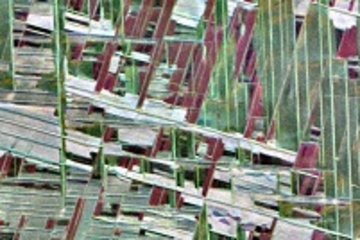All genres
41.
Poster
Quantum-mechanics-based study of multi-scale elastic properties of hierarchical biocomposites. Prospects of bionics for functional Materials Science, Montan University Leoben, Leoben, Austria (2010)
42.
Poster
Enhancing mechanical properties of calcite by Mg substitutions: An ab initio study. Psi-k Conference 2010, Berlin, Germany (2010)
43.
Poster
Influence of Structural Organization and Mineral Distribution on the Local Mechanical Properties of Mineralized Cuticle. Workshop Prospects in BIONICS, Leoben, Austria (2010)
44.
Poster
Ab initio based study of multi-scale elastic properties of hierarchical biocomposites. Psi_k Conference 2010, Berlin, Germany (2010)
45.
Poster
Arthropod cuticle: A biological multi-functional composite used as template for nano-to-macro-scale hierarchical modeling. Materials Science and Engineering 2010, Darmstadt, Germany (2010)
46.
Poster
Structural organization and mineral distribution in load-bearing exoskeleton parts of the edible crab Cancer pagurus. DPG Frühjahrstagung 2010, Regensburg, Germany (2010)
47.
Poster
Influence of Structural Organization and Mineral Distribution on the Local Mechanical Properties of Mineralized Cuticle from the Crab Cancer pagurus. Materials Science and Engineering MSE 2010, Darmstadt, Germany (2010)
48.
Poster
Leg joints of the lobster Homarus americanus as an example of cuticle modification for specific functions: Variations in structure, composition and properties. MRS Fall Meeting 2008, Boston, MA, USA (2008)
49.
Poster
Microscopic anatomy and mineral composition of cuticle in amphibious isopods Ligia italica and Titanethes albus (Crustacea:Isopoda). European Microscopy Congeress EMC 2008, Aachen, Germany (2008)
50.
Poster
Distribution and function of amorphous CaCO3 and Calcite within the tergite cuticle of terrestrial isopods (Crustacea). European Microscopy Congeress EMC 2008, Aachen, Germany (2008)
51.
Poster
The isopod cuticle: A model to study formation and function of amorphous calcium carbonate in calcified tissues. European Geosciences Union General Assembly, Vienna, Austria (2008)











